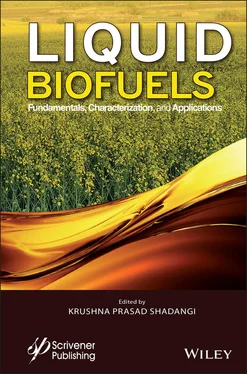Cellulose is in the basic structure of all plants, and the most important task of cellulose is to provide strength, uprightness and support to plants. Cellulose does not exist in its pure form in nature. Cellulose, which is the main structure element of the cell wall, constitutes 40-50% of lignocellulosic biomass [15]. Cellulose is almost never found alone in nature. It is often found with other herbal ingredients. This affects the breakdown of cellulose in the natural environment [9].
There are several types of cellulose in nature. All of these are used for different purposes [16]. Cellulose types are distinguished from each other by the letters a, b, d. A-cellulose is the most important of all species. B-cellulose and d-cellulose, which take the name “hemicellulose”, are less resistant to acids and bases and have the ability to break easily [13].
Hemicelluloses are the most important component of lignocellulosic substances after cellulose. Hemicelluloses are formed by bounding simple sugars in different ways and found in plants at a rate of approximately 20-30%. Their polymeric structure is quite open (amorphous) and irregular (branching) compared to cellulose, and they are more sensitive to reactions than cellulose, which is arranged in the form of flat chains. Hemicellulose can be dissolved and swollen in water due to its amorphous structure [17].
Hemicellulose includes ether-bound pentoses, hexoses, sugar acids and ester-bound acetyl and feruloyl groups. It is a heterogeneous polymer consisting of 5C pentose sugars (such as xylose arabinose) and 6C hexose sugars (such as mannose, glucose and galactose) and sugar acids. Hemicellulose does not have a crystalline structure and therefore has a lower degree of polymerization than cellulose (mostly about 200) [18]. Unlike cellulose, hemicellulose is not chemically homogeneous. Hemicelluloses in hardwoods contain large amounts of xylan, hemicelulloses in softwoods contain more glucomannan [19]. In most plants, xylanes are a type of heteropolisaccharide. These include 1.4 linked homopolymeric chains of β-D-xylopyranose units. Unlike xylose, xylanes contain arabinose, glucronic acid or 4-O-methyl ether of glycronic acid and acetic, ferulic and p-coumaric acid. Branching contents and frequencies depend on the xylan source [20]. The xylan spine (skeleton) contains O-acetyl, α-L-arabinofranosyl, α-1.2 bound glucronic or 4-0-methyl glucronic acid. Hence, xylanes can be categorized as linear homoxylanes, arabinoxylanes, glucuronoxylanes and gluronoarabinoxylanes [21].
Lignin is the most common natural polymer in the plant world after cellulose. Its main task in the cell wall is to hold cellulose fibers together due to its adhesive properties [15]. It is also known as the substance that forms the woody structure of the root and stem in the plant [16].
Lignin is a glycoside and can be easily decomposed into glucose and aromatic alcohol. This glycoside is called coniferin. Alcohol derived from this compound was also called coniferyl alcohol. Most of the polymeric structure of lignin contains three types of alcohols; synapyl, p-coumaryl and coniferyl alcohols [22].
It is understood from the fragmentation products that the main structure block of lignin consists of an aromatic core and a propane chain [23]. There are several functional groups in some parts of the molecule. The basic unit of lignin is called phenyl propane. Phenyl propane types produce lignin by connecting to each other in various styles [24]. The general structure of lignin can be explained by dehydrogenating polymerization of coniferyl, sinapil and coumaryl alcohols. The complex structure of the lignin and the formation of various bonds occur when the phenoxy radicals of these monomers are matched in different ways [25].
The structural duties of lignin in the plant cell are to give rigidity to the cell wall, to ensure the adhesion of different cells in the wood tissue, to make the cell wall hydrophobic, to protect the wood from microbial disintegration. The structure of the lignin is very suitable for performing these functions. Aromatic rings and hydroxyl groups provide non-covalent dipole aromatic interactions and hydrogen bonds between cellulose and hemicellulose. Bending of the structure is prevented due to the branches in the structure of the lignin [26].
Lignin can be used in many industrial areas: as water processors in heating-cooling systems, cement industry, road construction, oil well drilling mud, agglomeration of animal feed, ceramic production, paint production, pesticide drugs, pipelines, casting molding rods, plywood production [27].
1.3 Types and Category of the Biomass
Biomass is defined as any mass or residue of any natural or organic (decaying) substance obtained from existing plants or animals, of which biological origin is non-fossil and renewable. Biomass is the common name given to all organic materials including land and water-growing plants, forest and agricultural plants, animal waste, herbaceous and woody energy plants, organic wastes of cities, and industries and municipalities, which can be renewed in less than 100 years [28]. Biomasses which are carbohydrate compounds are transformed into solid, liquid and gaseous bioenergy. Bioenergy is passed through various physical, chemical and biological methods. It has commercial properties whose basic and specific properties are standardized [29].
There are four basic biomass resources: marine residue, forestry residue and crops, animal manure and industrial waste. Marine biomass – sea weeds, algae, reed plants and some microorganisms found in the seas and lakes – have high moisture content and growth rate, while forestry residues and crops are wood industry residues and wood residues consisting of woody and herbaceous plants [30, 31].
Biomass sources can be also classified as classic and modern. Classical biomass sources consist of wood obtained from forests, plant and animal residues (stalk, straw, straw, etc.) used as fuel. Modern biomass resources include energy forestry, wood and forest industry wastes, animal wastes and urban wastes. Modern biomass resources can be considered as biomass from plant, animal and industry. The raw use of classical biomass resources without any transformation creates adverse effects on the biomass energy potential and the environment. Modern biomass sources have an important biomass energy potential and with the development of these sources, it is estimated that more traditional biomass resources can be used [29, 31].
Marine biomass consists of microalgae, sea plants with little or no lignin content and fast-growing photosynthetic species. In the past decade, there has been an increase in the focus of research on alternative fuel production from marine biomass [32]. In addition to marine biomass, marine microorganisms have unique properties such as high osmotic tolerance, utilization of certain sugars and the production of special enzymes [33]. Seawater is a potentially important marine resource. Microalgae (seaweed) are great resources for biomass production due to their fast growing and their high lipid content in certain species. Macroalgae (seaweed) can be divided into three types, brown, red and green. When comparing sugar composition, brown seaweed contains alginate, mannitol, laminarin, fucoidin and cellulose; red seaweed contains carrageenan, agar, cellulose and lignin and green seaweed contains mannan, ulvan, starch and cellulose [34]. In general, seaweed contains 23–67% carbohydrate, 4–23% protein, 1–4% lipid and 14–42% ash content. When compared with macroalgae or terrestrial biomass, microalgae cell wall is relatively easy to break down following a lysozyme, dilute acid, therefore marine biomass is easier to obtain [35].
Читать дальше












